Buckle up troopers, this one's a banger. Organism is the work of Dr. Morro, the same author behind Olympia, which I covered here. It was a prior nominee for the same prize. Blame my own incuriosity for not investigating his other offerings at that time, but it seemed unthinkable that Olympia could be anything other than a one-off. Enter: Organism...
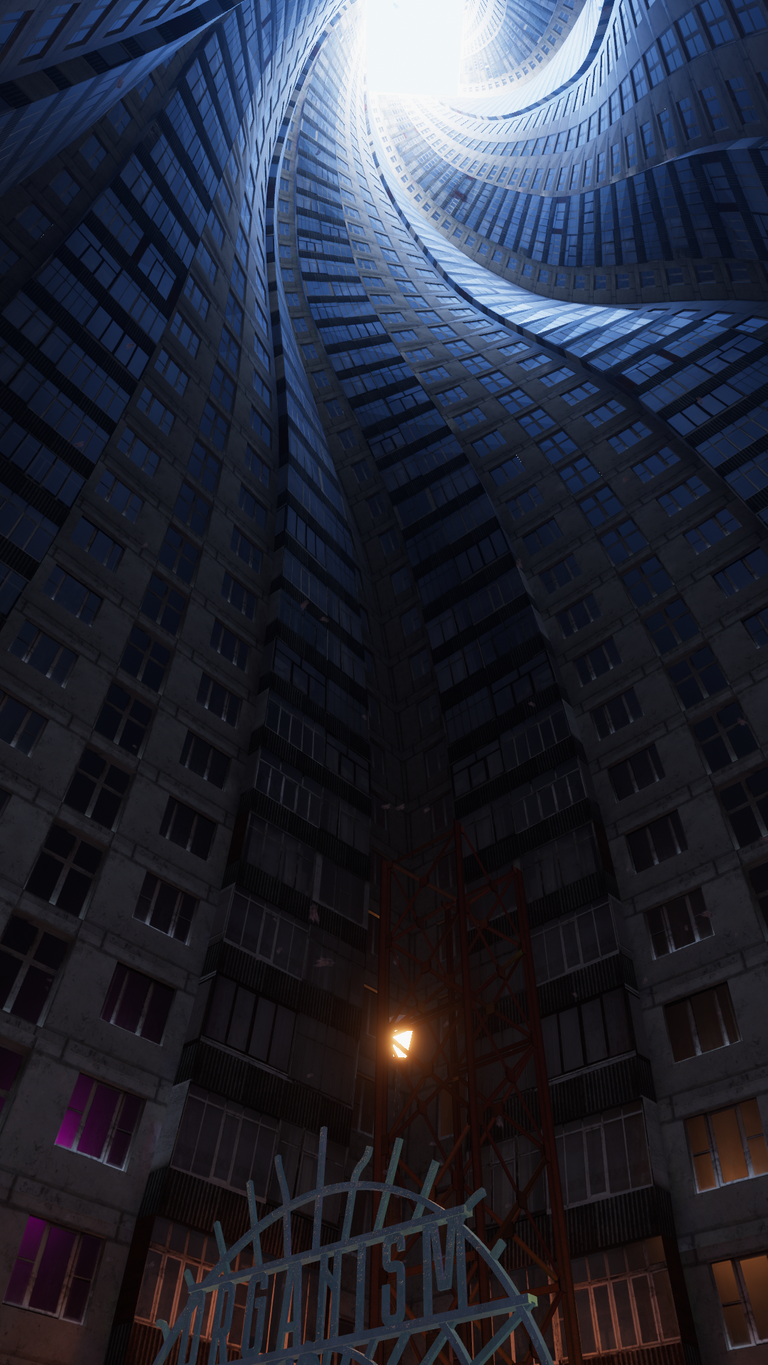
Winner of first prize for Best Immersive World at Raindance Immersive 2022, right off the bat you can tell it's gonna be something special. The opening area, besides including DrMorro's contact info, has four numbered doors which later turn out to be a fast travel system to various points in this sprawling labyrinth, unlocked by four digit codes you'll find along your journey.
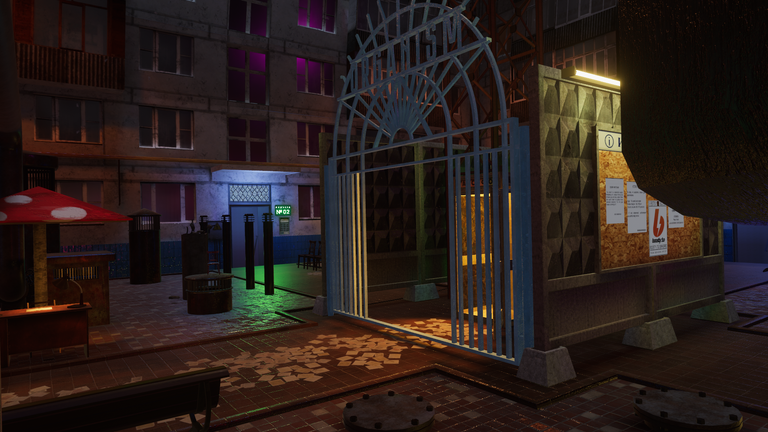
The world weighs in at around 400 megs. A whopper, but honestly impressively small given the scope of the map, and the more you poke around the more evident it becomes how he accomplished this feat: Through the creative and judicious reuse of assets at different scales and orientations, neatly excused by Organism being a surreal dream world.
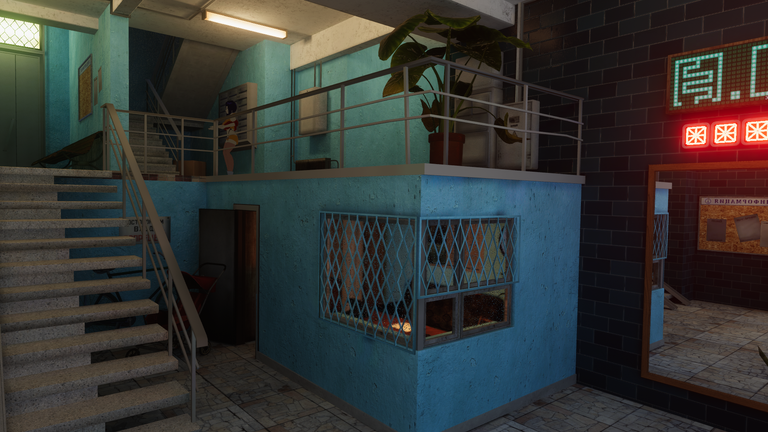
That can make it tricky to discern what's an intentional design choice, and what's a mistake. For instance in an early reception room to what looks like a hotel or kruschevka, the indoor windows have rain droplets running down them. Elsewhere, the rain trickles upwards or sideways without respect for gravity. It's a jarring sight in areas that evoke the mundane, and Organism contains a lot of familiar, mundane sights, as viewed through an oneironautic kaleidoscope.
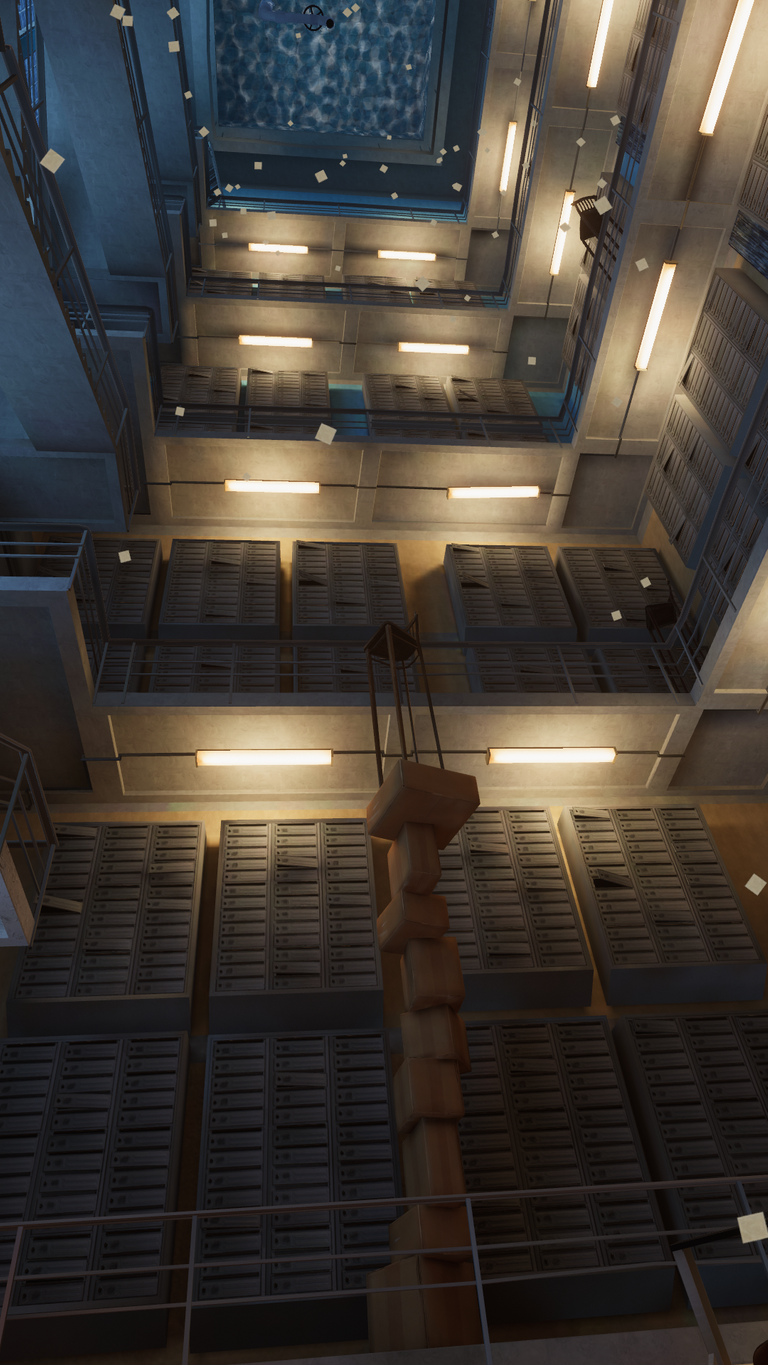
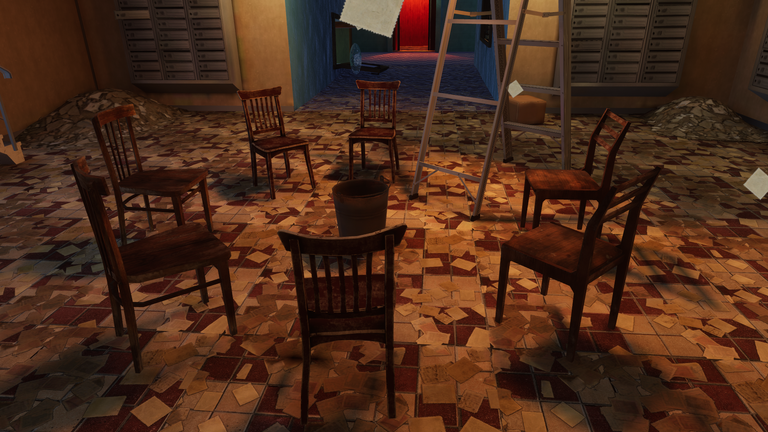
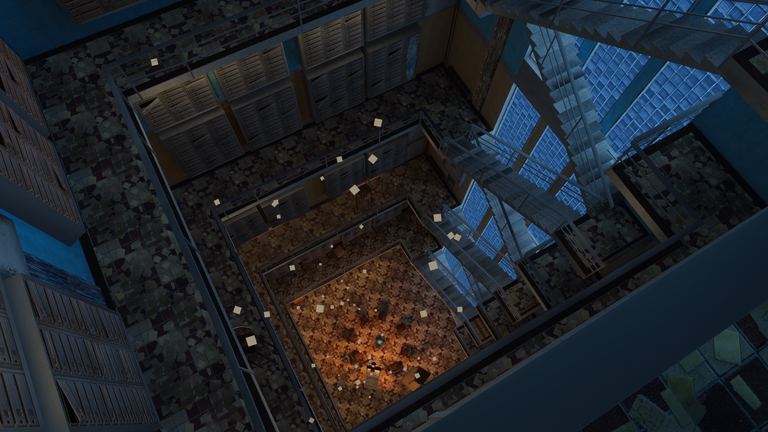
There are apartments. There are hospitals. There are art galleries, post offices and libraries. Not as you or I know them, unless you happen to live within an Eastern European dreamscape. And indeed, the imagery is overwhelmingly borrowed from Russia and other slavic countries, circa (I estimate) the 1980s. I would say 60s except for the inclusion of chunky green screen microcomputers at one point.
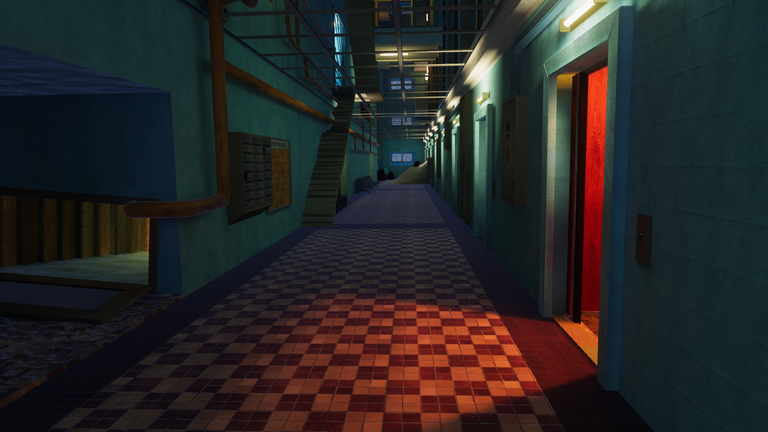
Organism had me feelin' some kinda way. Not the trappings of Russia specifically, rather, I've seen some of these architectural distortions in my own dreams. I've also often wondered about apparent commonalities between the dreams of strangers, like the moon appearing unusual in color or size when dreaming, or being able to wake up reliably by falling.

The organized, methodical exploration of dreams is called oneironautics, and is one of the topics I've written extensively on. It only becomes more topical with each passing day, as you may have noticed that AI image generators produce conspicuously dreamlike distortions. This gels nicely with MIT's discovery that LLMs process language in a manner which closely resembles how human brains also do it.
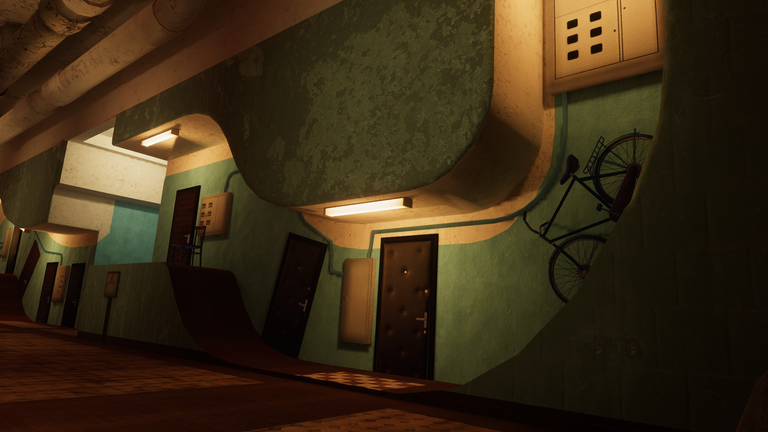
When you're a kid, everything's magic, because magic is just whatever we don't understand yet. So as we age into adults, the percentage of the world which appears magical shrinks, until it occupies only a scant few reservations. Love. Psychedelics. Art. Dreams. Dreams are perhaps the closest thing to magic which everyone regularly experiences, somehow brushing aside as unremarkable that our brains go on journeys of their own creation every night.
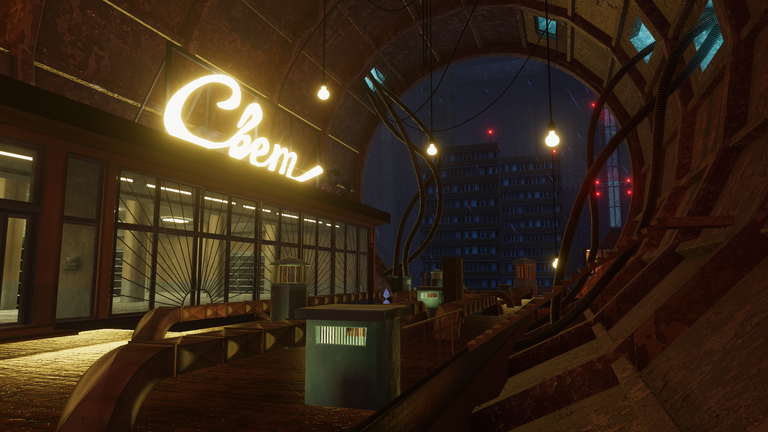
Organism captures that magic very well. Technically all the components of this world are realistic, every day objects and architecture. Just blended, twisted and folded back on themselves by the power of the human subconscious. It may well be Russia, or Ukraine, or Lithuania, etc. as a child's imagination would render them. As stodgy, responsible adults, our brains no longer developing, our personalities and worldviews crystallized into their final forms...VR is one of the only ways back into that headspace, depending what drug laws are like where you live.
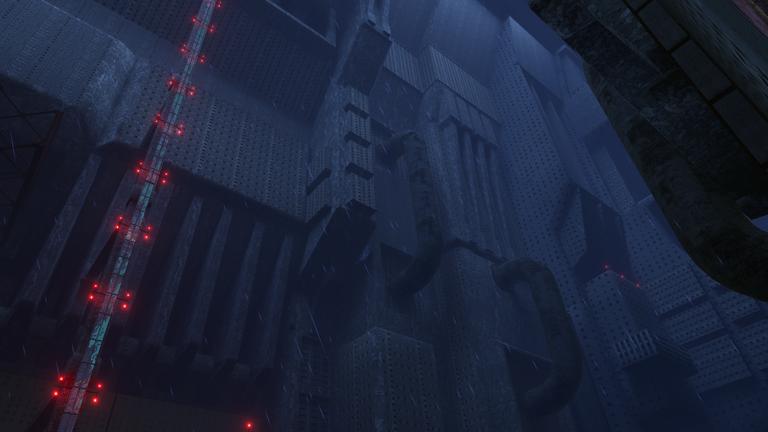
That would be generalizing credit to all humanity though, when I ought to focus it on Paul AK, or "DrMorro". We all have this magic in our minds, but it is the celebrated talent of artists to take it out of the mind and put it on paper, or in this case silicon. To "eff the ineffable", as I've sometimes put it. That's no small feat. AI can approximate human art styles, but as yet, it cannot peer into the "inner universe" of humans, pluck the bizarre and beautiful from within that space, and give definite form to it. Nailing down that most elusive of all qualia, packaged into something millions may then consume. That's the real hat trick, and what separates wizards from mere mortals.
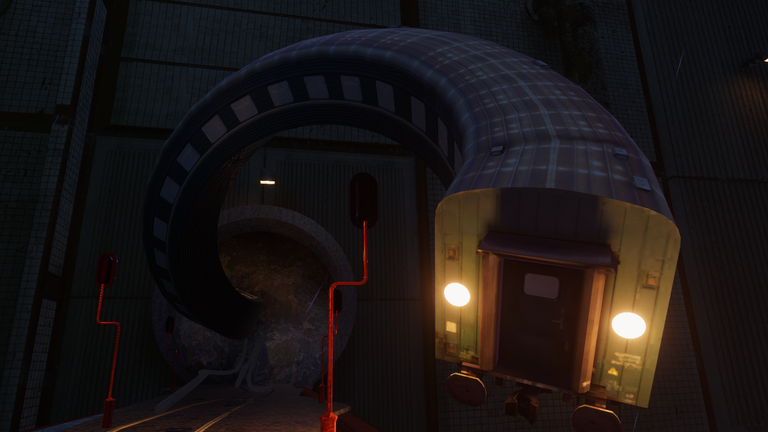
Each of us has an equally magnificent inner universe, I'm inclined to believe. Populated with our notions, ideas, inspirations, fears, questions and concepts as stars populate the night sky. Swirling, forming and reforming, resplendent in its ever-changing, evergreen vitality. However, we cannot see into the inner universe of our neighbor. Not directly. Our ability to show our inner universes to one another depends on our powers of expression, be it through writing, painting, or VR world creation.
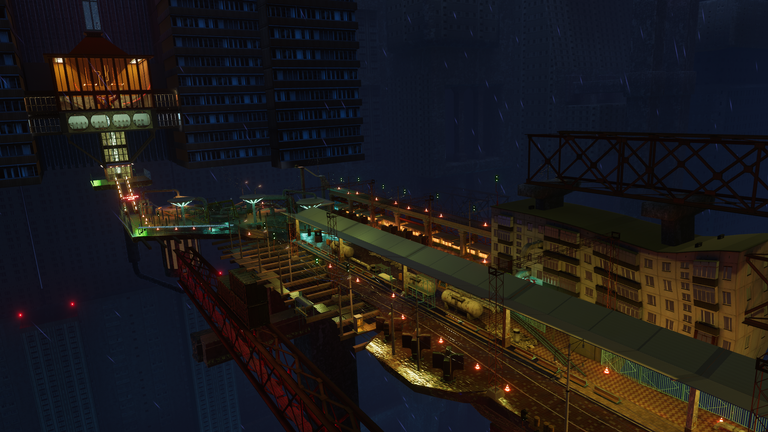
Those we put down as simpletons, a lower grade of human, contain the same wonders as the most celebrated creatives, I think. But they lack the means to show it to anyone, except through a glass, darkly. Like each of us has a lens in our foreheads, through which others may peer into our inner universe. For those with highly developed skill in language or arts, the lens is crystal clear and well polished. For those who did not have the opportunity to develop their language skills or artistic talents, their lens is smudged and dirty. Yet still, if you squint, you can catch a glimpse. Some small hint of the awesome beauty and impossible possibilities within every human mind.
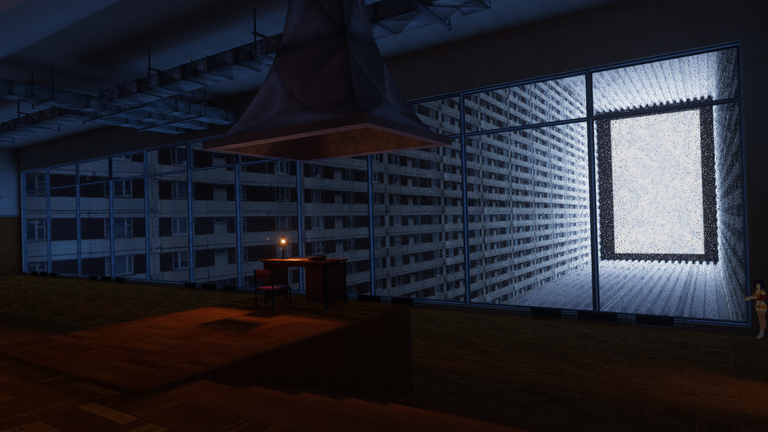
After all, everybody dreams. We all visit that beautifully strange place during our nocturnal wanderings. We all witness the unfathomably alien, yet intimately familiar novelties of the collective unconscious. We differ only in how much we can bring back from that world, to share with others. Blessed are we, then, that Dr. Morro ventures into that space with a dumptruck rather than a trowel, dredging up the quixotic astonishments of the subconscious from the dark sea of forgetfulness after we wake up, returning it all to the surface by the ton rather than by the pound .
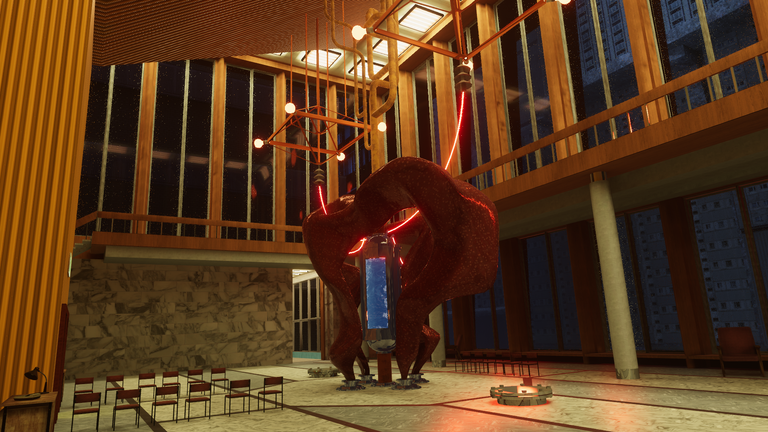
Can we talk about the detail? The branching pathways? While there's a definite beginning and end to Organism, and a discernible flow which guides you along the main path, there are also innumerable side paths. Little foxholes leading to cozy hidden forts, wherever the layout seemed to permit (or suggest?) their inclusion. There are also absolutely enormous portions of this map that it will gladly let you skip by entirely if it doesn't occur to you that they may be accessible rather than just background scenery.
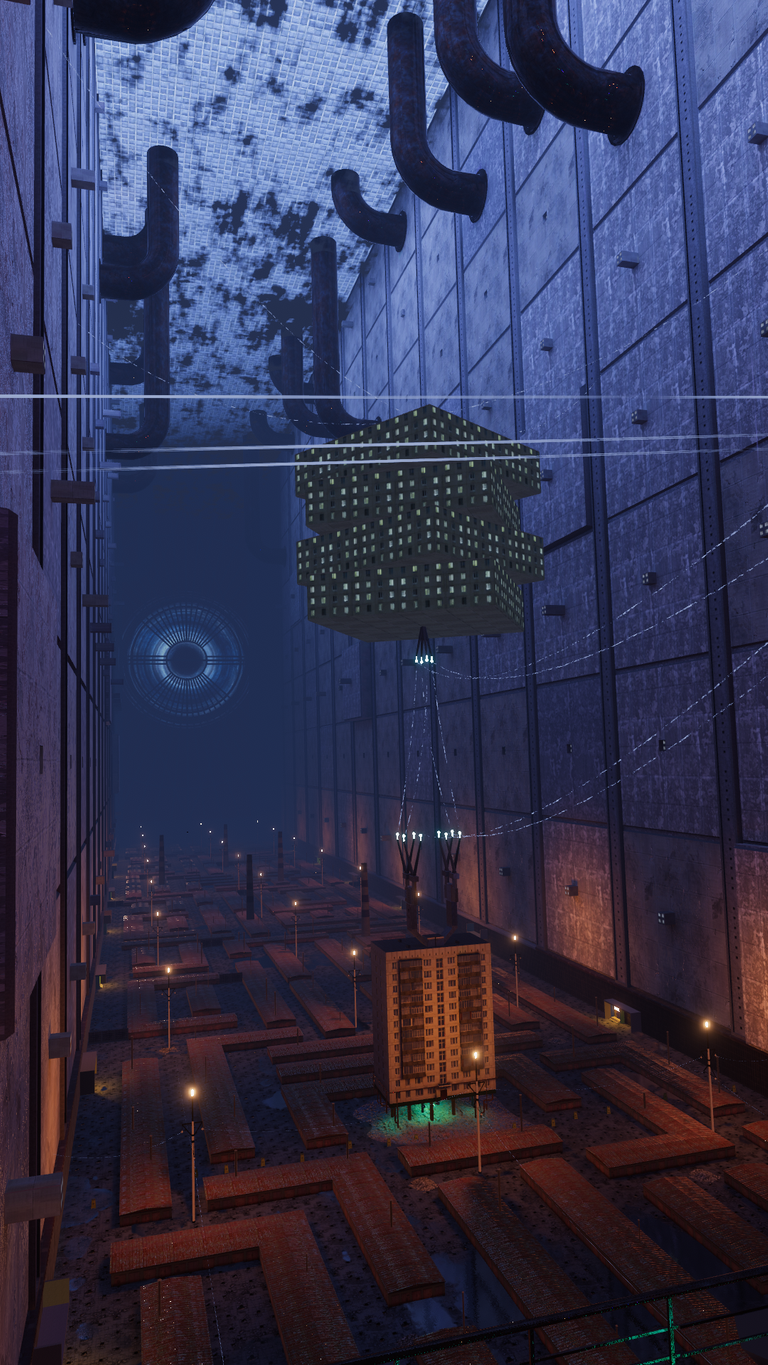
Take this area. It's the view from the suspended train platform/bridge seen earlier. Was I remiss to assume you're not meant to leave the bridge? That everything down there was just for show? That's egg on my face. It wasn't, you can go down there. Both ends of this grand hall have cool little set pieces to discover if you take the time to reach both, aided by super speed and jumping conferred upon you by a radioactive green glow beneath the centrally positioned panelak.

You could entirely miss it, if you didn't know. I did the first time. There's no such thing as mere background scenery in Organism. It brings to mind my childhood fascination with details seen in the parallax scrolling backgrounds of 16 bit games, which seemed to suggest entire other areas unreachable from the foreground. Like a distant campfire or village in the background of Castlevania 4, or distant oil rigs in Sonic 2's Oil Ocean, or the cave waterfalls of Yoshi's Island. The background world is what most tantalized me then. The road not taken. Organism is nothing but a tangled, fractal web of roads not taken.
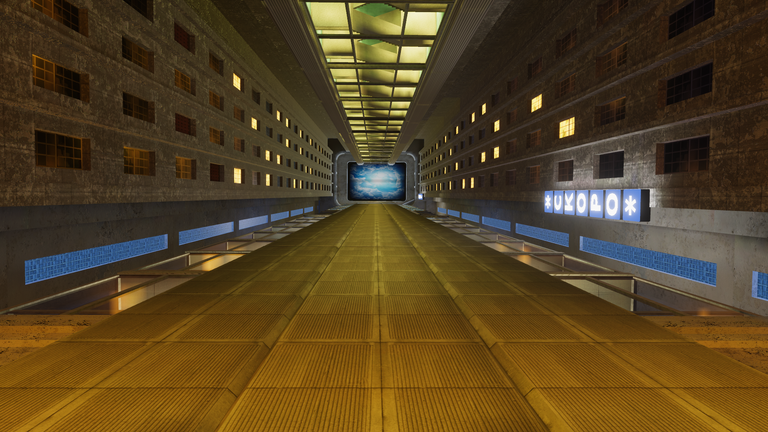
This is mostly a good thing. It means Organism is the sort of map which cannot be fully enjoyed in a single sitting, and that every time you revisit it, you're liable to find something you missed before. But it also means strong feelings of FOMO, or Fear Of Missing Out, at least on your first run through. Maybe that's just me? Every time the map forced me to choose from two or more paths, I had paralysis of indecision. Going down one path would surely only lead to further wonders. But so would the other path, and I couldn't take both.

How like life itself, except that we don't get second chances in life to take the other path. It's been said that every decision you make in life destroys all the other possible lives you might've led. Other versions of yourself you might've become. From this knowledge comes the nagging concern that there was a closely adjacent life path, separated from your own by even just a single, seemingly incidental choice, but in which you're vastly happier. Wealthier, more accomplished, well loved. A cruel illusion, maybe, but a persistent one.

VR lets us cheat our way around that limit, as with many others. VR is the truest realization of the collective unconscious. A collaborative, multi-user dream world where the impossible is trivial. But it does mean Organism demands more of you than the typical VR Chat world, if you hope to see everything it has to offer. It isn't a snack, it's a ten course meal. Like certain classic films, it gets better with the second and third viewings, as you notice more and more details you overlooked the first time.

Even now, I'm not certain I've seen everything. Organism is not a map you merely explore. It calls for an expedition. A rigorous deep dive, to document all the nooks and crannies, which were far too many to include screenshots of. Forgive me, I couldn't include all the best parts even, as it was difficult to narrow it down. There's something fantastical around every corner in Organism. At once, fantastical and dreary somehow, like a derelict refinery infested with fireflies.
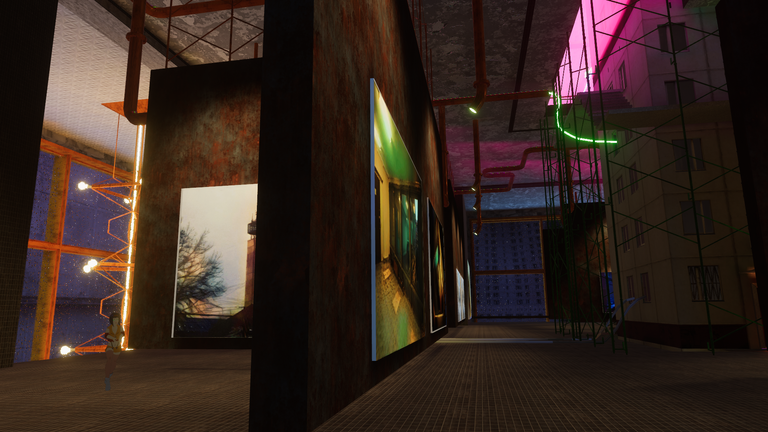
The art gallery was a head scratcher. DrMorro is an accomplished 2D artist so I'd be surprised if these weren't his own original works. Many resembled AI artworks however, of the sort Dall-E might produce. If they are his works, what a splendid place to showcase them. Another impossible possibility of VR, for an artist to not only own the gallery in which his works are displayed, but the very reality in which the gallery resides.
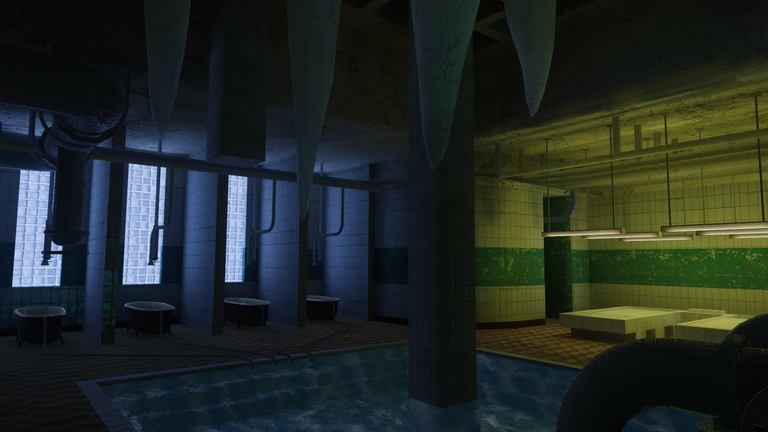
Your mileage may vary, however, depending where you grew up. Many of the architectural details seem like they would resonate more with someone culturally familiar with Russia or the Baltic states. I didn't understand what some of the devices were, like the indoor UV lights for tanning or seasonal affective disorder therapy, until happening across photos of such lights being used in 1960s Russia. For someone not inclined to investigate the basis of some of these visions, it may be hard to determine exactly how much was ever based in reality, as opposed to concocted from whole cloth for this map.

For me it added to the alien vibe. The strange yet familiar feeling of immersion in another real world human culture paired nicely with the strange yet familiar feeling common to dreams. Settings from the waking world, from your day to day life, just not quite as you know them. Uncanny valley as applied to alternate realities. The small changes which somehow make everything fresh, different and new. Like Tolkein putting pointy ears on humans and calling them elves, or reducing their height and giving them beards, to produce dwarves. Not so wildly different as to be unrelatable, but a sort of funhouse mirror held up to humanity. Organism is such a funhouse mirror, held up to large parts of Europe.
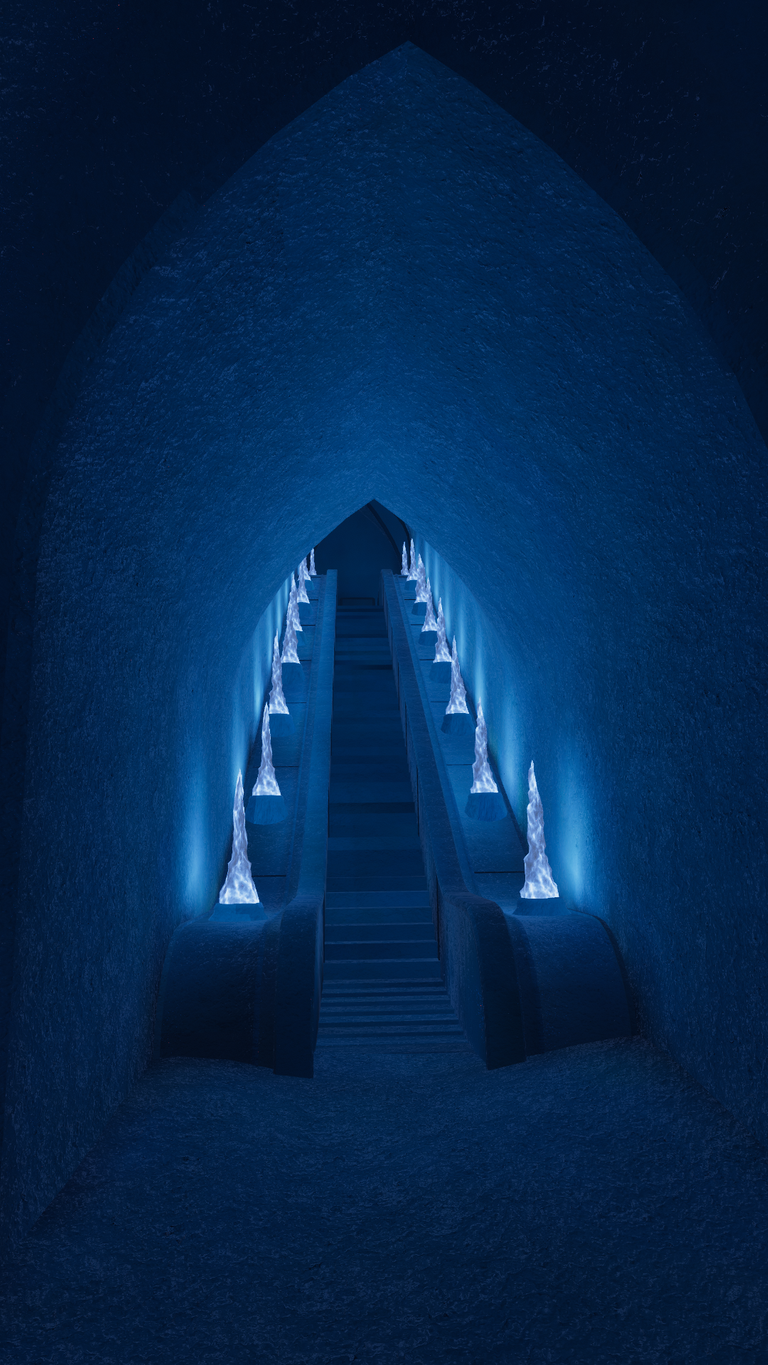
On your way through this baffling odyssey, you may feel many things. Surprised, frightened, melancholy, nostalgic, even awed in the way one feels at the sight of nature's majesty, or for some, what we call religious feeling. As you approach Organism's terminus, perhaps appropriately, a hospital bed and heart monitor await you. A vortex into oblivion, or the next life, swirls below. The halls leading to it resemble gothic church architecture and the sound design takes a turn for the somber.
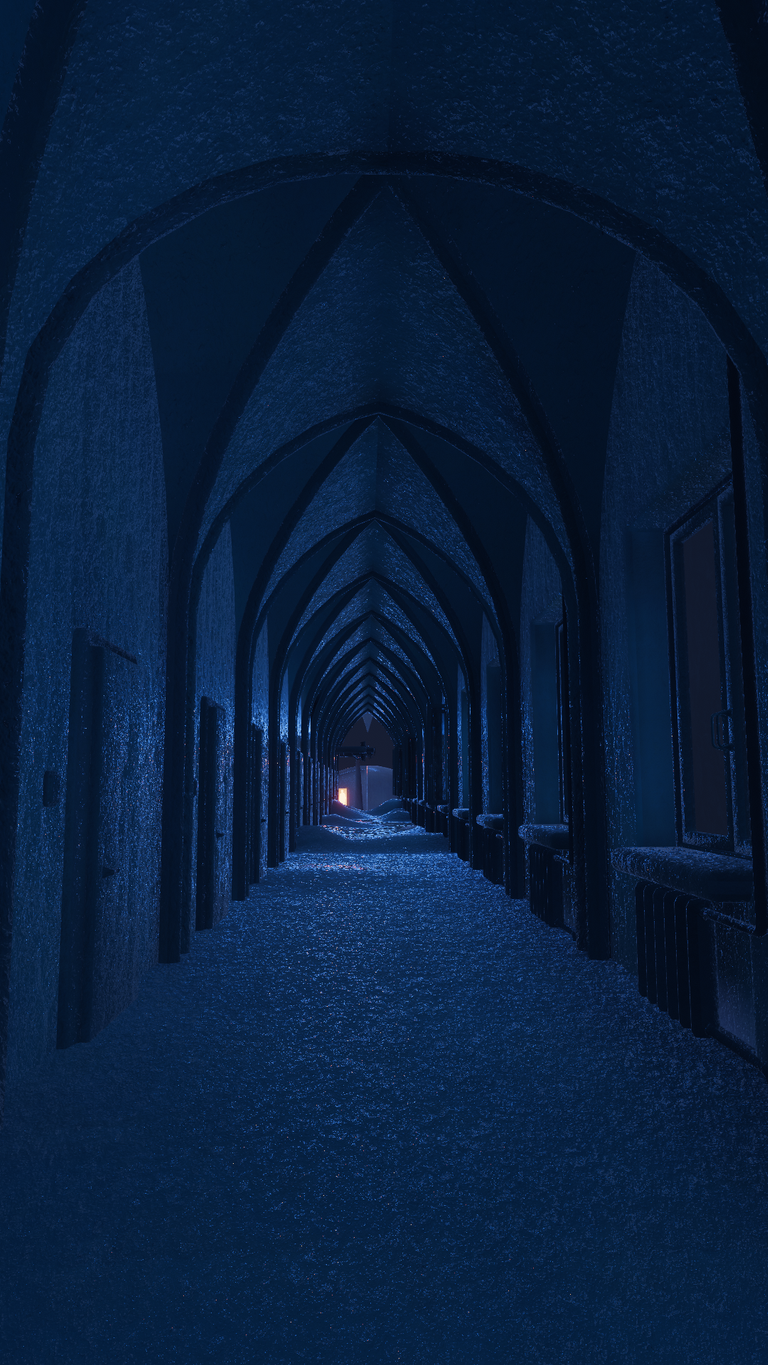
If we began in a maternity ward and then traveled through elementary school, I would say the ending suggests that the journey of Organism is just the journey through a human lifespan. I still want to make the pieces fit, as it would be satisfying symbology. Perhaps I'm missing something. But at the end, at least, there is a strong feeling of enfeebling finality.
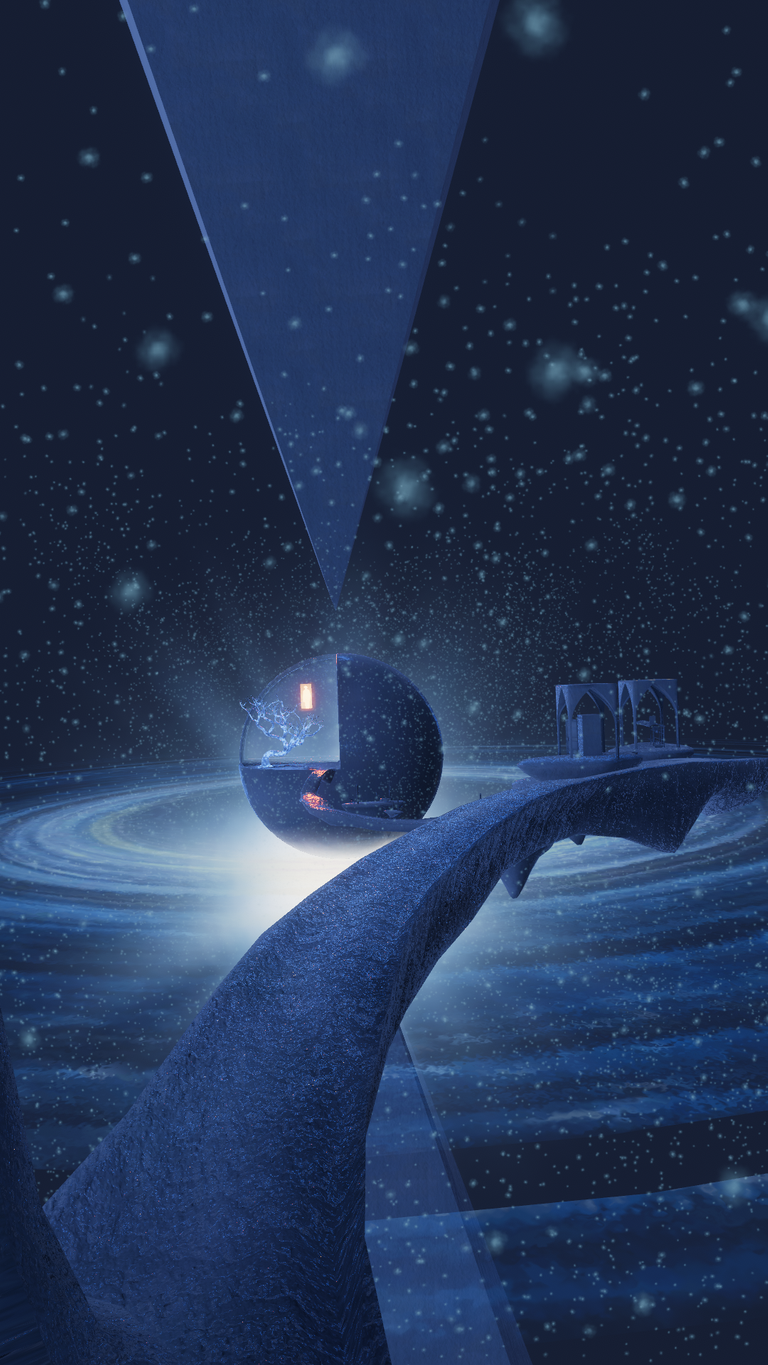
Alas, nowhere to go but forward, to the end of all things. Reflecting on the sights and sounds we enjoyed on our journey, the map funnels us towards the only outcome I suppose was ever possible. But surely, the journey was the point of it? The beauty of a rose is not found in its longevity. We are here for a good time, not for a long time, and Organism was certainly a good time.
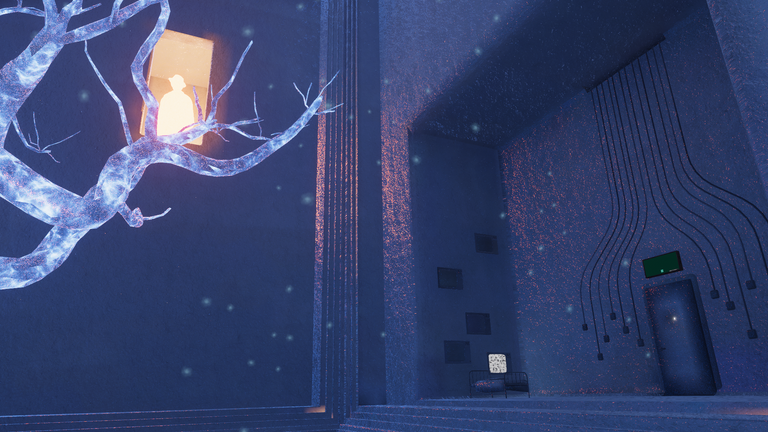
There, overlooking our final resting place, stands the Man in the Hat. Avatar of Paul AK and I suppose, relative to the context of this area, a stand-in for the supreme being. A promise that there may yet be something else waiting for us on the other side of that door into eternity. Trusting in the design of the mastermind who crafted this world we so enjoyed, we press buttons, turning off life support. Fade to white, and we're plummeting down a tunnel with a light at the end, familiar to anyone who has read NDE reports. Then...we fall back into the starting area. Presumably to undertake this odyssey anew, this time taking different paths, making different choices than before.
What does this say about Paul AK's beliefs? Reincarnation? Perhaps I'm looking into it too deeply, and sometimes a pipe is just a pipe. Difficult not to ponder bigger questions after such a mind expanding sojourn however. Another mark of great art, besides getting something new from it on repeat viewings, is that it expands our horizons and gets us thinking in new directions. It's been a week since I first played Organism at the time of this writing, and it still lives rent free in my brain. That's really the best recommendation I could give, and might've just said that upfront to save you all the reading, except that it would've deprived me of the chance to share all these lovely mementos.